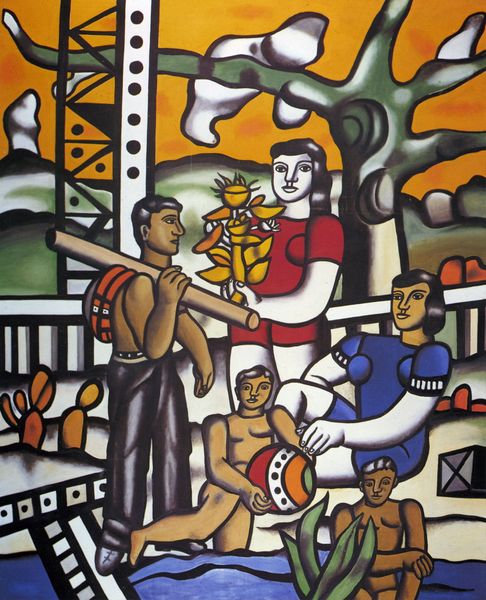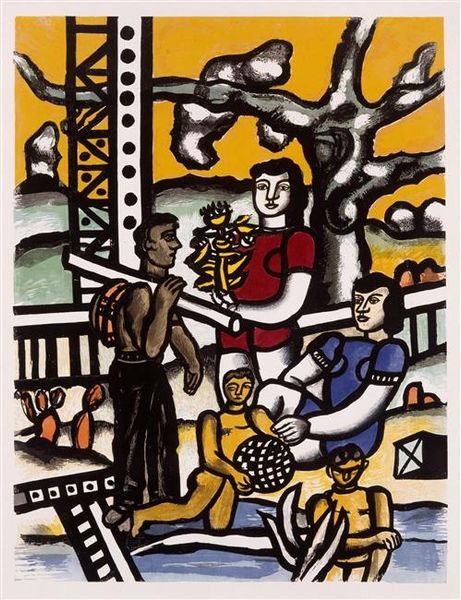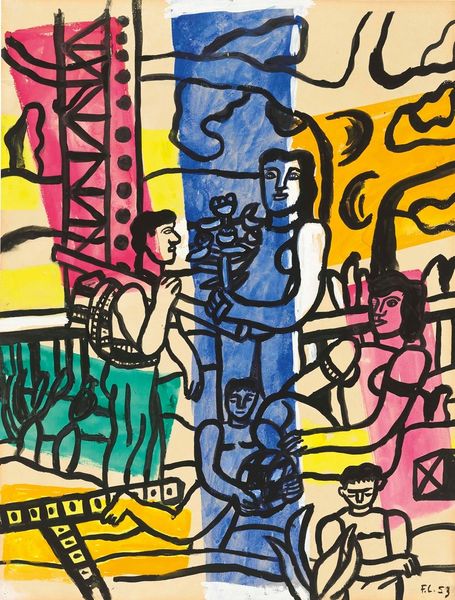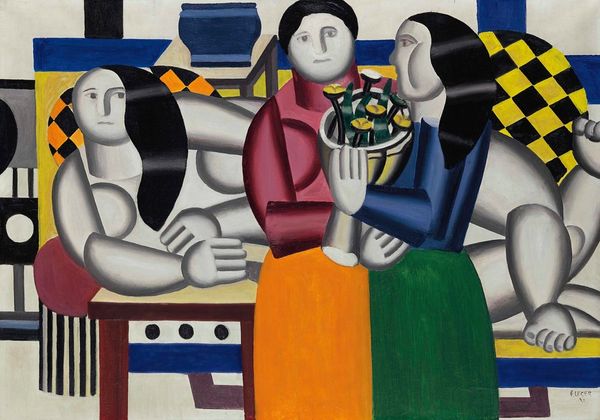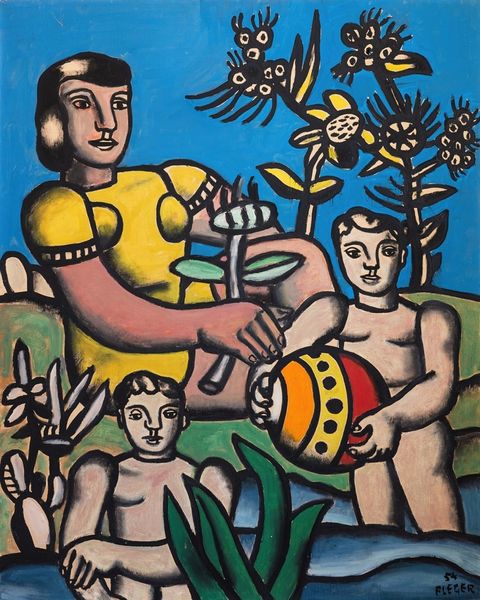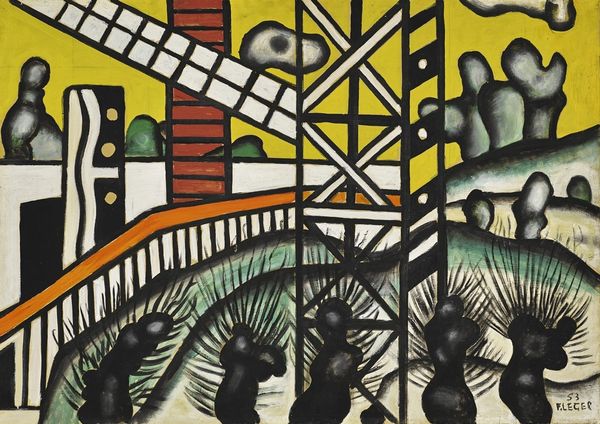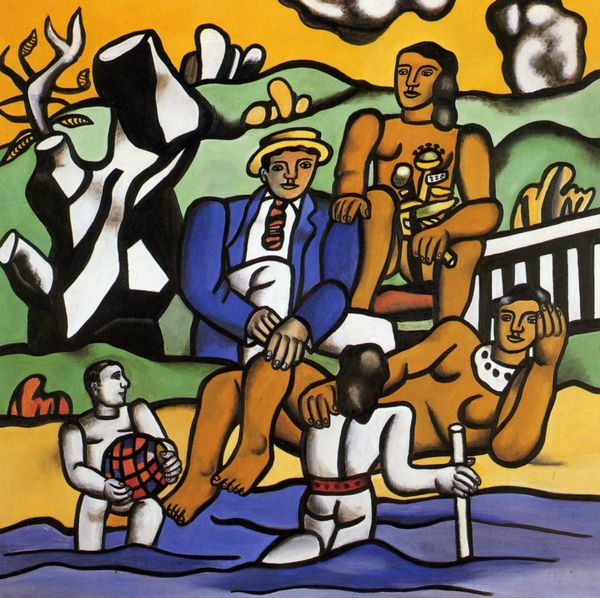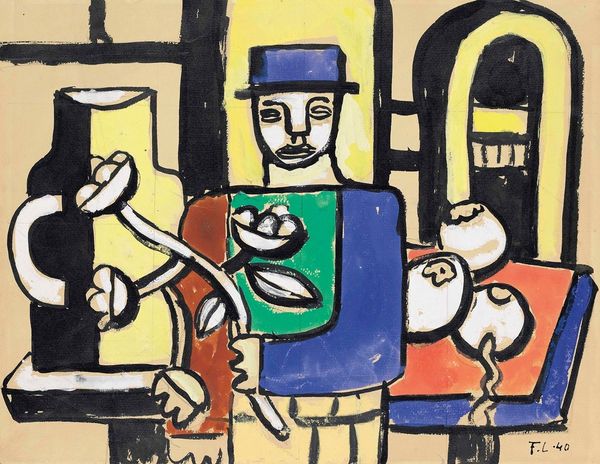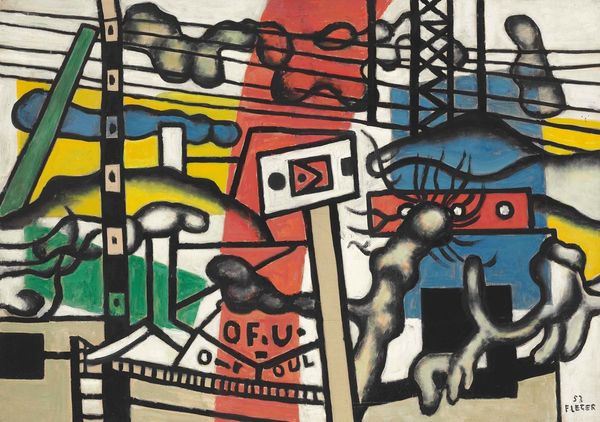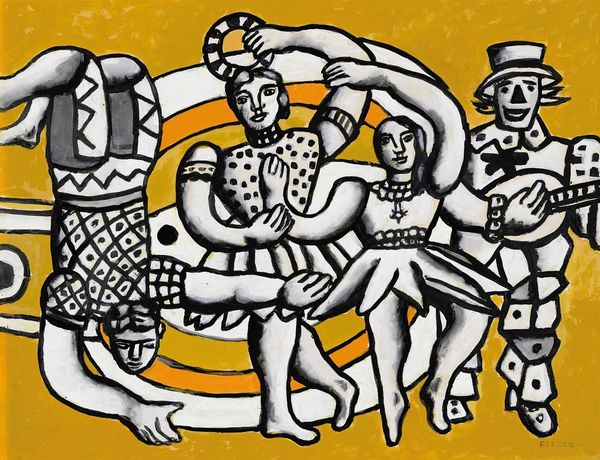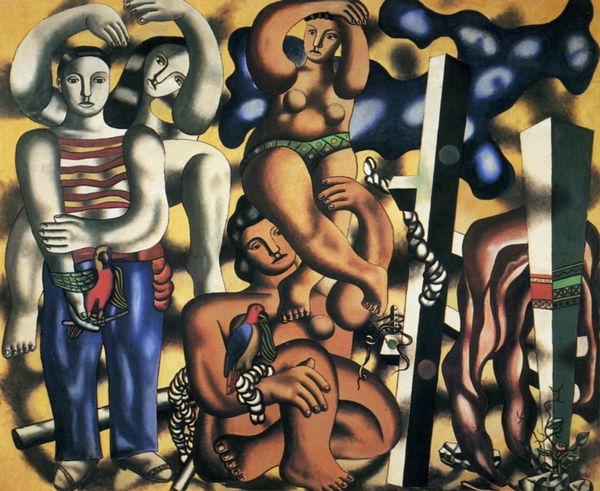
Copyright: Modern Artists: Artvee
Editor: So, this is "Le Campeur, 1er état" painted by Fernand Léger in 1954. It's oil on canvas and the composition, with its figures and industrial elements, feels almost like a mural in its flatness. What draws your eye in this piece? Curator: I see a deliberate engagement with the means of production reflected in both the subject matter and Léger’s process. Notice the stylized figures set against the backdrop of what looks like both nature and scaffolding. Léger’s method embraced industrial techniques, echoing the era’s fascination with mass production, do you see it too? Editor: I see the scaffolding, but how does that tie into Léger's artistic process? Curator: He consciously employed simplified forms and bold colors reminiscent of industrial design. Think about the clean lines, the unmodulated blocks of color. It's not just *what* he depicts, but *how* he depicts it – treating the canvas almost like a manufactured surface. He's leveling the playing field between high art and the aesthetics of everyday labor. Editor: So, you are saying it's not just a picture *of* laborers, it's also art that adopts a working-class aesthetic through materials and technique? Curator: Precisely! And consider the social context: post-war France, rapid industrialization. Léger seems to be celebrating the modern worker and the intersection of human activity with the manufactured world. The painting itself becomes a product, mirroring the societal shift he's portraying. The subject and its mode of production work in harmony. What do you think of this perspective? Editor: I hadn’t considered it that way. I was focused on the narrative, the figures themselves, but seeing the painting as a product, influenced by industrial techniques, opens a whole new dimension. Curator: It demonstrates how deeply embedded art can be within the social and material realities of its time. I think looking into his manifestos can lead to an even greater appreciation. Editor: That’s really helpful. Thanks for that insightful look! Curator: My pleasure. I think the most interesting art always invites us to consider how it’s made, and what that process tells us about the world.
Comments
No comments
Be the first to comment and join the conversation on the ultimate creative platform.
